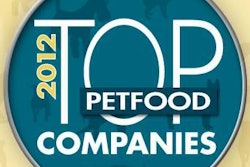A panel of experts convened in December 2011 predicted the price of corn and other commodity ingredients would moderate this year after record-setting price hikes last year. Though these experts are part of the poultry industry, their predictions might hold insights (and good news) for petfood manufacturers, too.
Paul Aho, economist for Poultry Perspective, predicted somewhat lower grain and energy prices -- which are closely linked because of biofuel policies in the US and EU -- in 2012, according to Terrence O'Keefe, editor of Egg Industry magazine, reporting on the panel convened in late 2011 at US Poultry's Grain Forecast and Economic Outlook Conference. Aho predicted a bushel of corn would fall to about US$5 over the next two years, compared to US$6.58 a bushel at the close of business today (according to Agriculture.com). Aho's prediction also compares favorably to the US Department of Agriculture's November 2011 World Agricultural Supply and Demand Estimates, which pegged a farm price of US$6.20-7.20 per bushel of corn for the 2011-12 crop year.
Another expert on the US Poultry panel, Tim Brusnahan, VP of consulting for Brock Associates, said his company projected corn at US$5.75-6.50/bushel for the 2011-12 crop year and US$5.25-6.25/bushel for 2012-2013. He added that the price could fall below US$5/bushel if economic growth is really small and demand for gasoline drops, which will in turn hurt ethanol demand (another driver behind corn prices). "In addition, he said that what happens with the EU economy and DDGS [dried distillers grains with solubles, by-products of grains] exports to China could also have an impact," O'Keefe wrote.
Speaking of ethanol and its impact on the supply of corn -- last year, for the first time ever, more corn went into ethanol production than to feed livestock and poultry in the US -- on January 1 the US federal subsidy for corn ethanol, which amounted to roughly US$6 billion a year, ended. (As a result, the ethanol industry is expected to focus more on cellulosic ethanol, made from non-foodstuffs such as switchgrass, wood chips and the leaves and stalks of corn.)
Even if the formulations for your petfood products don't include corn, its pricing, supply and demand affect those of other grains and commodity ingredients*, so an increase in the supply of corn along with a decrease in its price is indeed good news for petfood producers. That, accompanied by data from Euromonitor that global petfood sales grew in 2011, makes for an auspicious start to the new year for our industry.
*You can learn more about pricing and availability of commodity ingredients at Petfood Forum, where experts from the Agricultural Products division of the CME Group (home of the Chicago Board of Trade) and Trilateral (a purchasing and risk management advisor on commodities and related ingredients) will share short- and long-term projections and recommendations for dealing with the commodity market's volatility. If you register for Petfood Forum by February 1, you'll save up to 15%.
















